Interstate Bridge in Duluth
Before the Interstate Bridge was built between Duluth and Superior in the late-1890s, the only way to get between the two cities was by ferry. Of course, ice often prevented the ferry from crossing in the winter. In 1894, the Duluth-Superior Bridge Company was incorporated with the purpose of building a bridge that connected Connors Point in Wisconsin to Rice’s Point in Minnesota. Disagreements between the two cities delayed construction for months, and the bickering didn’t end once construction began. When the bridge opened on April 23, 1897, the first person to make the journey across the bridge found that the Superior side wasn’t completed and was forced to turn around. In fact, the bridge wasn’t officially completed until July of that year.
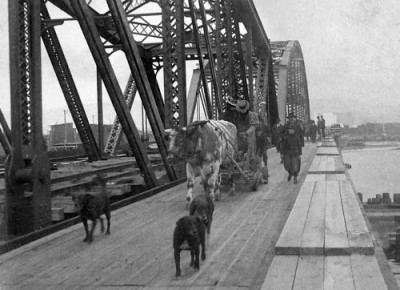
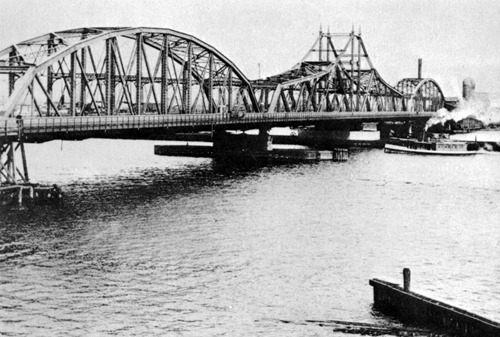
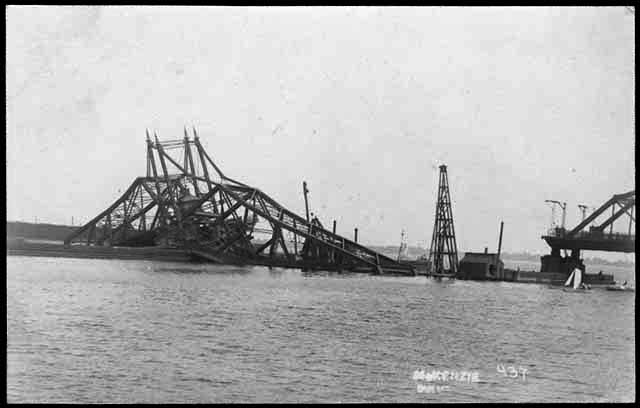
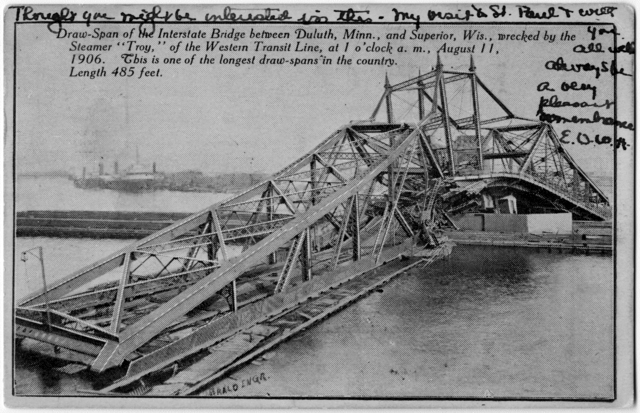
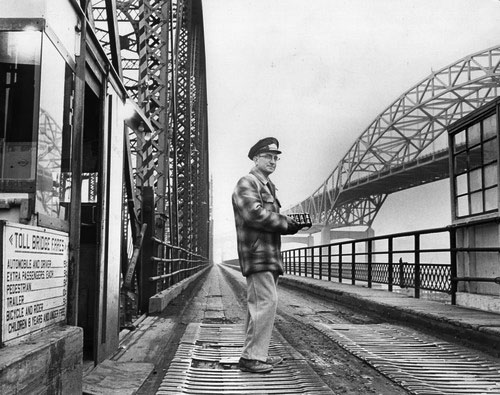
The Interstate Bridge was made up of long wooden trestles on each end. In the middle, a 485-foot steel truss swing span–the largest in the world at the time–was sandwiched in between two 325-foot steel humpback trusses. The swing span swiveled to allow shipping traffic to pass.
A toll was collected from everyone crossing the bridge: pedestrians and bicyclists paid five cents, wagons and carts were fifteen cents, and each head of cattle cost a dime. Travelers crossed using a platform that hung off of the western side of the structure. Two parallel railroad tracks running down the center of the bridge carried trains and trolleys. Eventually, the bridge was refitted for automobile traffic. The streetcar line was removed in 1938, and by 1949 only one railway track was in use.
On August 11, 1906, disaster struck. At about one o’clock in the morning, the captain of the package freighter Troy signaled the bridge operator to open the swing span so the ship could pass. The captain wasn’t concerned when the bridge did not start to move right away because the bridge had a reputation for a slow start to swing the span open. But on this night, the bridge operator had fallen asleep and did not initiate the operation until it was too late. The 3,665-ton freighter slammed into the swing span knocking a two-hundred-foot section of steel into the harbor. The northern part of the span buckled and then collapsed. All traffic in the channel was blocked, and thirty-three ships were trapped in the harbor.
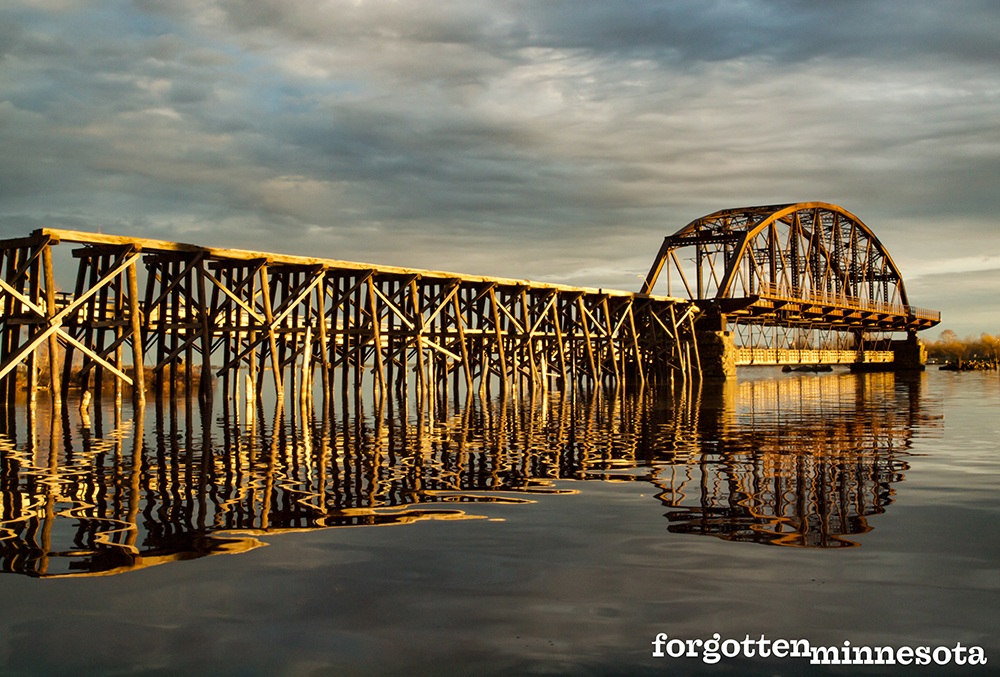
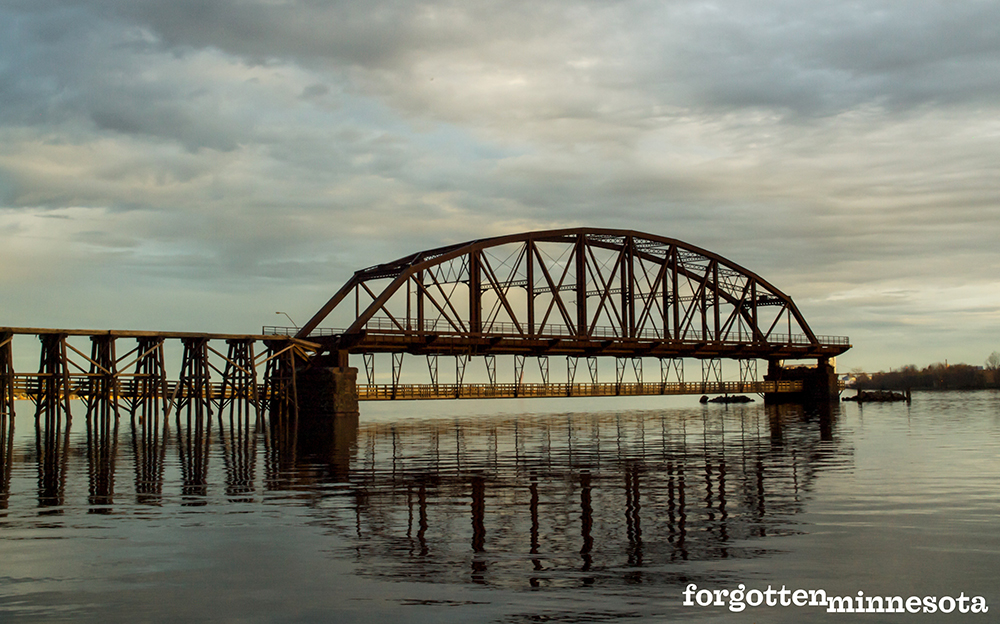
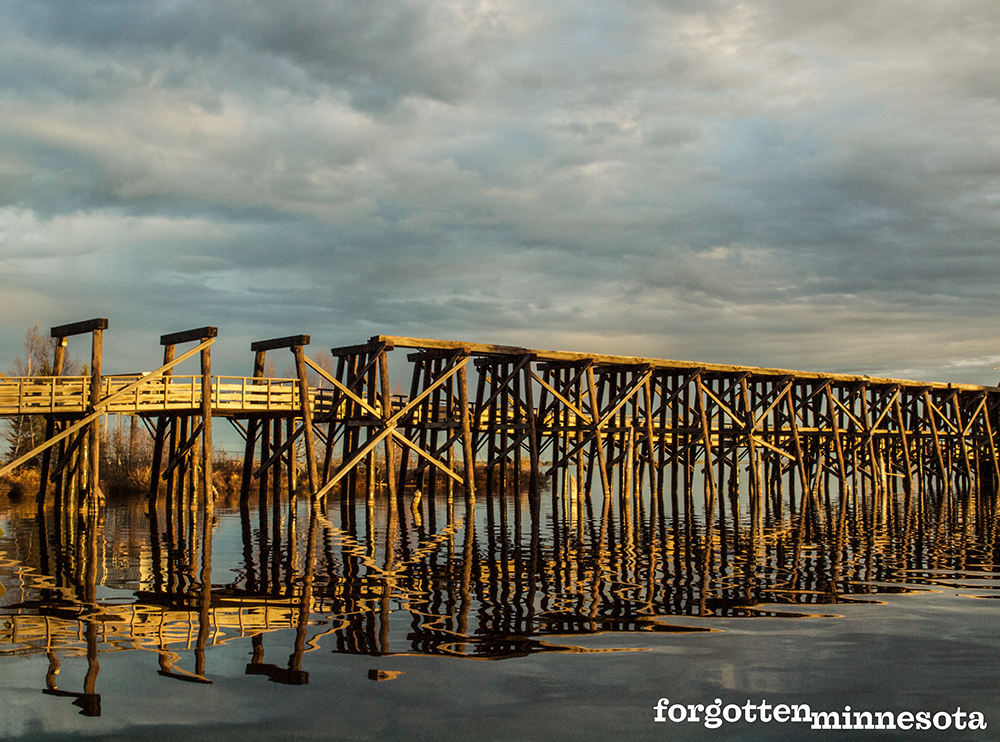
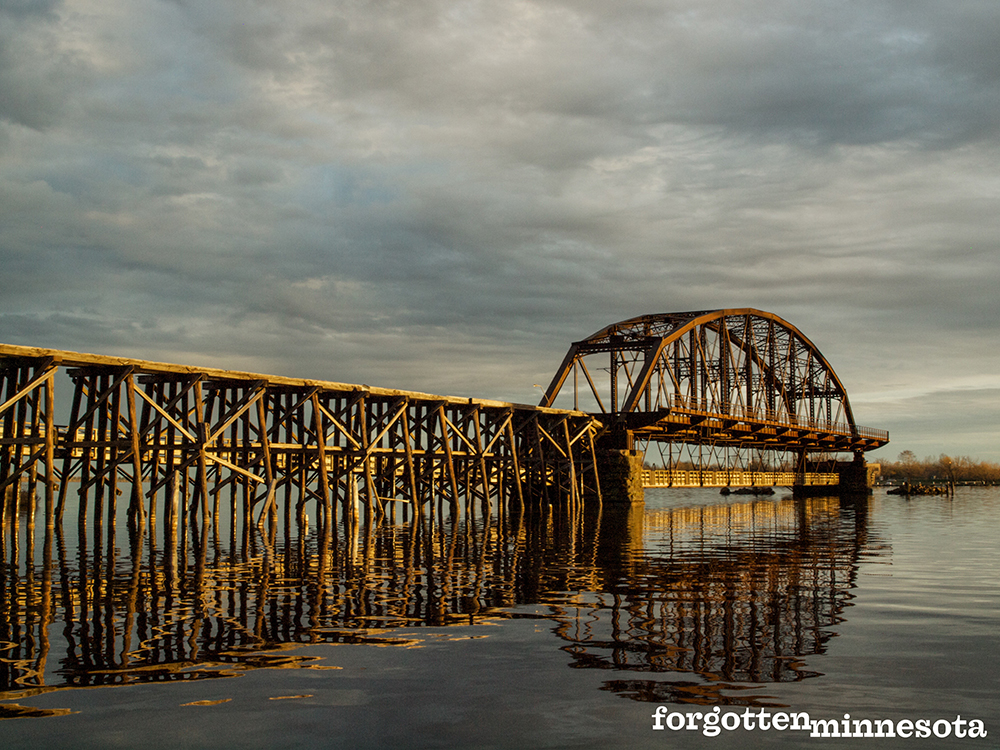
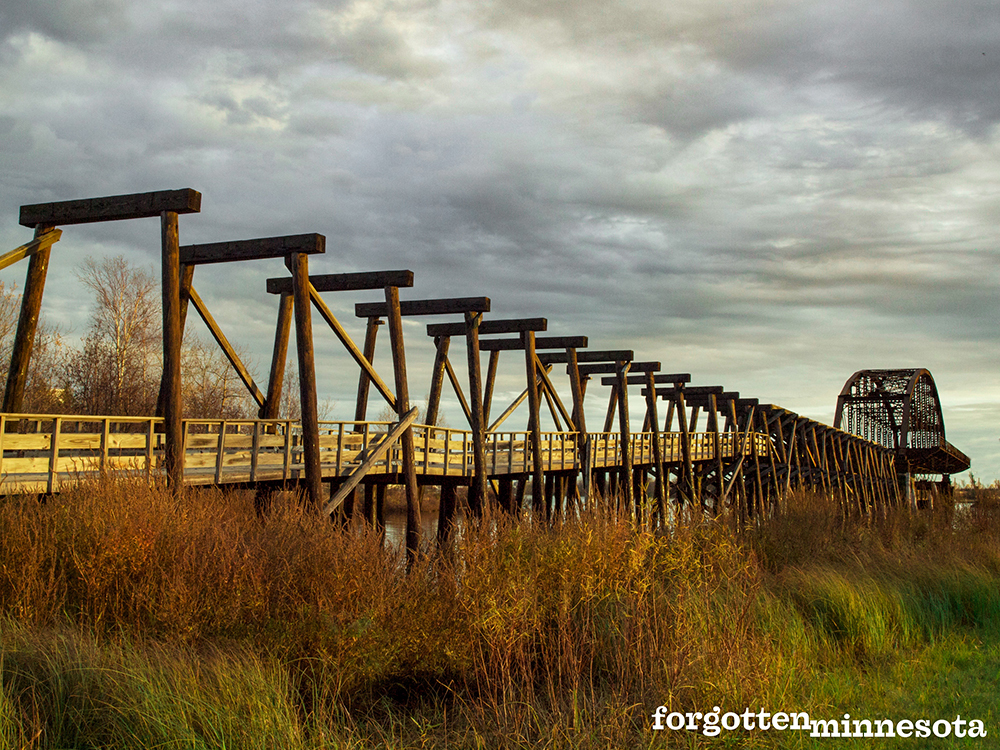
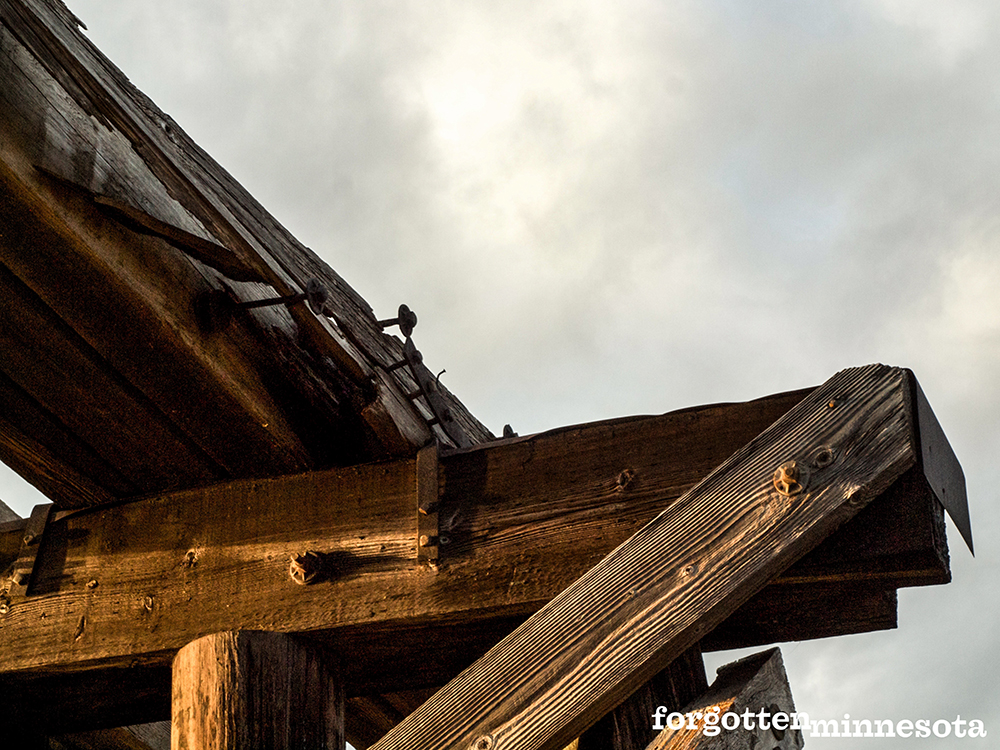
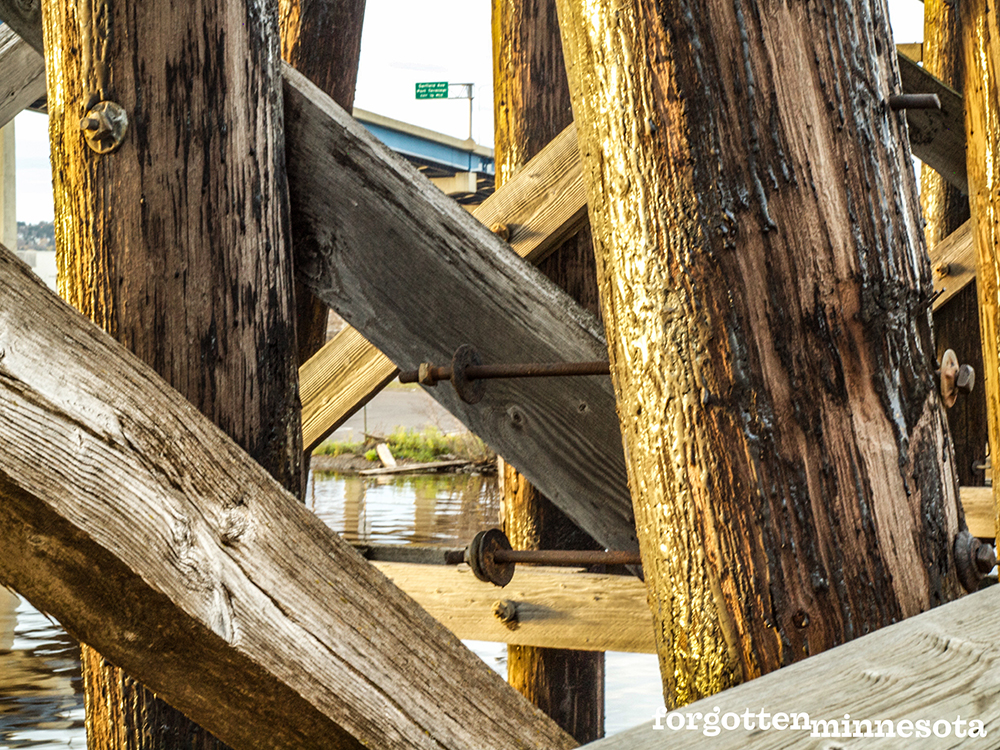
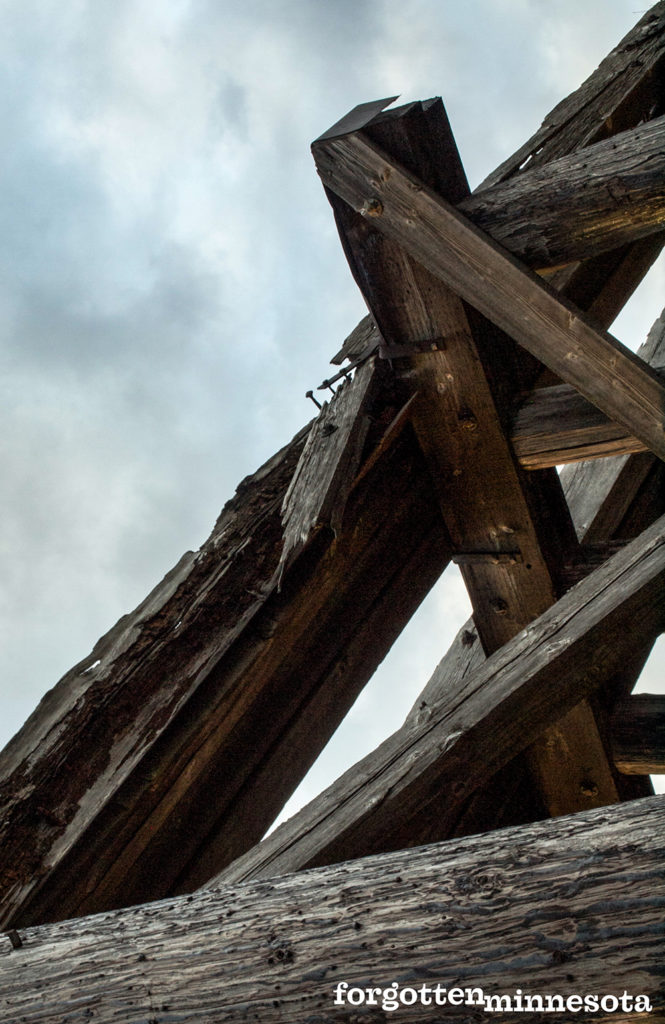
Cleanup was costly and time-consuming. The owners of the thirty-three vessels stranded in the harbor were losing nearly $1,000 per ship, per day. The work of clearing debris took place around the clock, but it still took ten days to clear the channel enough to get the ships out. For nearly two years, ferries once again carried people across the harbor while repairs were made to the bridge.
The repaired Interstate Bridge operated until the Duluth-Superior High Bridge (renamed the Blatnik Bridge) was built to replace it in 1961, and the center span of the bridge was removed in 1971. In December 1981, the bridge was sold to the Port Authority of Duluth for one dollar. Visitors can now walk along the original wooden trestle on the northern span (Minnesota side) of the old bridge before reaching the steel humpback truss to fish off the end or watch ships passing on their way to or from the harbor.
